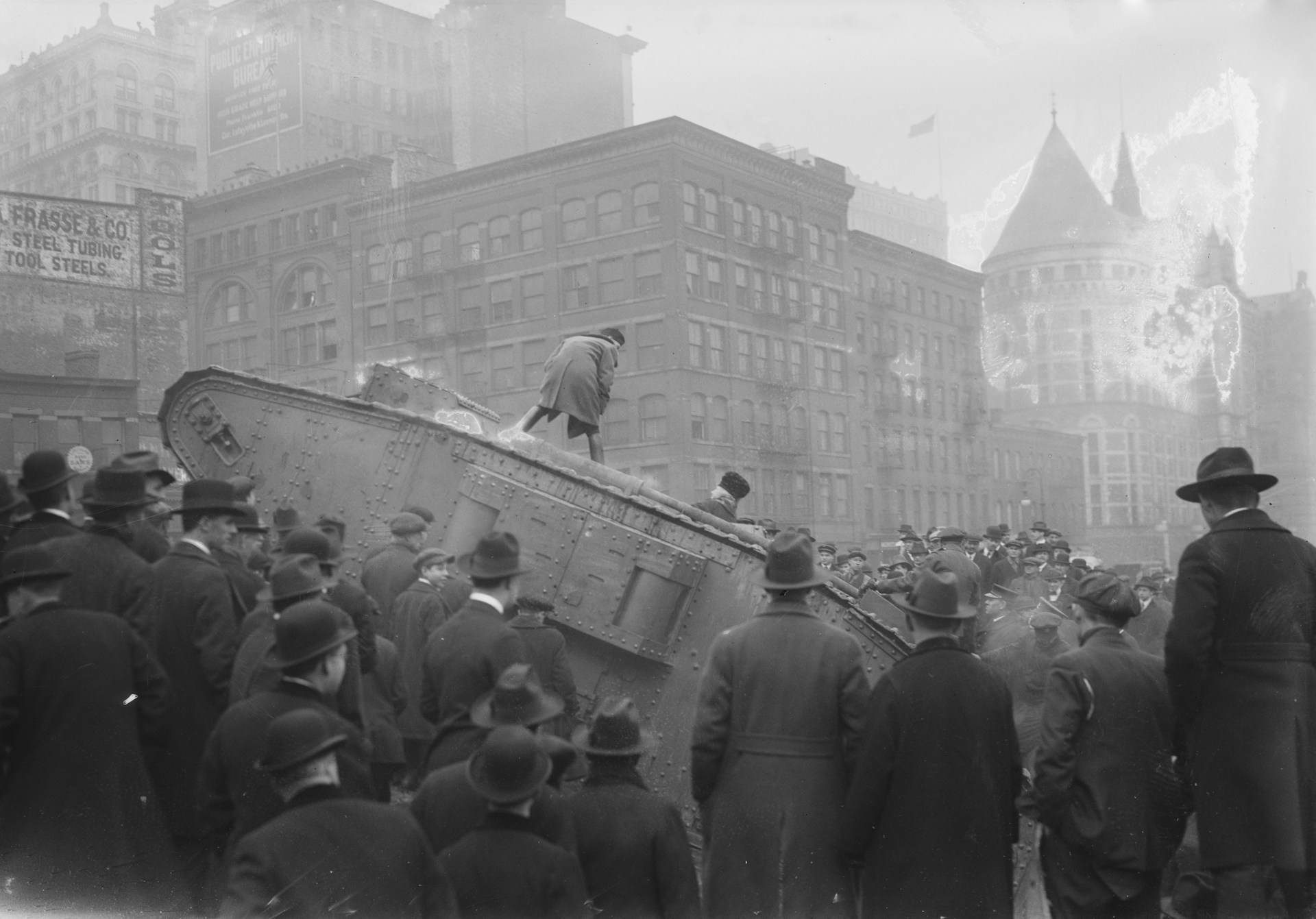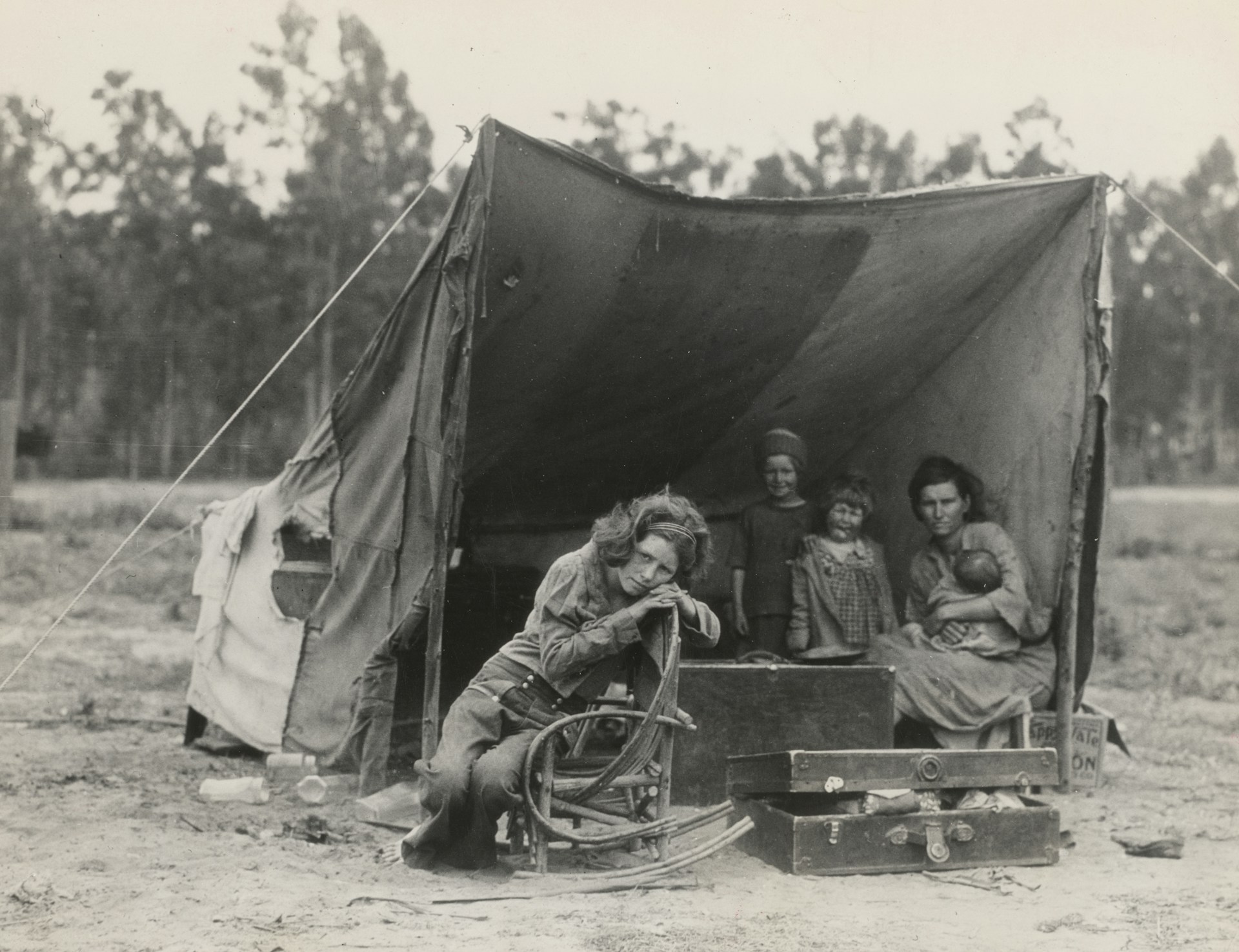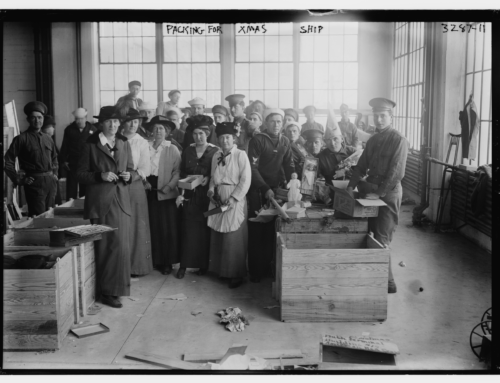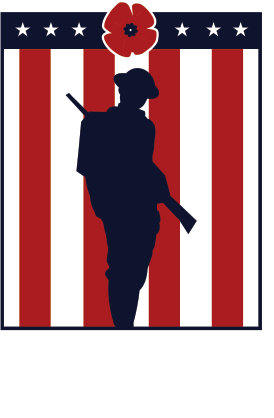How WWI Fear Led to Decades of Civilian Emergency Storage Culture
Published: 15 May 2025
By Jasper Carver
Special to the Doughboy Foundation website

How WWI Fear Led to Decades of Civilian Emergency Storage Culture (1)
A British WWI tank in New York City, in 1918.
World War I didn’t just redraw maps or shift world powers. It seeped into homes. Into kitchens and cellars, and into the backs of closets where rusted cans outlived the presidents who were in office when they were bought. What started in muddy trenches and mustard gas-soaked air eventually crawled into American domestic life with a subtle but lasting effect: a new emergency storage culture.
On the home front, people were told to prepare. And then, told again. The government offered pamphlets. Local councils pushed patriotic conservation. Leftover fear didn’t leave when the armistice was signed. Instead, it took root, lining shelves and shaping a new normal for ordinary families who learned to be ready for whatever came next.
From Clay Pots to Powdered Eggs
Long before the Great War, people stored food because they had to. Winters came. Crops failed. But this behavior was rural and seasonal, often tied to farming. A root cellar was a tool, not a philosophy. That changed during the war.
Following the history of storage, the evolution of storage through time reflects how national anxiety reshapes daily rituals. In the 1800s, a pantry was a place to keep flour dry and safe from mice. By the 1920s, it was also where you kept canned milk, powdered eggs, and extra soap – items recommended by war councils and domestic preparedness manuals.
The shift was fast. The war demanded efficiency, so civilian access to basic goods became inconsistent. Shortages were common. This encouraged people to hoard staples when they could and to listen when officials advised buying in bulk just in case. Even as peace returned, the habit didn’t fade. It was no longer only about the season. It was about survival under imagined future threats. Once a national trauma enters the home, it doesn’t exit through the front door with the same speed it arrived.
The Government, the Guidebooks, and the Garage
American citizens didn’t invent civilian emergency storage on their own. The government helped. Through posters, manuals, and public broadcasts, they redefined good citizenship. Storing dry goods, growing gardens, canning fruit – these were acts of loyalty.
After WWI, the tone shifted slightly. The enemy wasn’t named anymore. But the sense of looming instability stuck around. Families who had listened once to Washington’s advice didn’t need to be told twice. They turned garages into quiet bunkers. Pantries grew larger. Shelves expanded. What had once been a wartime obligation transformed into a lifelong mindset.
Children who grew up watching their parents stack rows of canned beans and flour sacks continued the tradition. They weren’t always sure why. It simply felt correct. And rational. A leftover instinct inherited from an era that has drilled preparedness into the public brain.
By the time WWII rolled around, Americans were already stocked. Not because they expected to be bombed in years prior to the war, but because their closets said: this is what people do.
Crisis as Routine
The Great Depression didn’t reverse the trend. If anything, it gave it new life. Suddenly, emergency storage wasn’t just for war. It was for unemployment. For drought and uncertain Mondays. A jar of pickles meant insurance.
And yet, something stranger happened. Storing goods became so normal that it lost its edge. What started as fear management grew into a cultural routine. This is the middle ground where emergency storage culture cemented itself, not as war-induced hysteria, but as prudence.
Preparedness was taught in schools. Boy Scouts earned badges for it. Housewives were praised for it in magazines. Recipes circulated based on pantry items that could survive for months. Americans built a nation that didn’t just value freedom, but also shelf life.
The Cold War
By the 1950s, the Cold War added another layer. Fallout shelters, government drills, “duck and cover” instructions – these stoked the same fears WWI had planted. And again, the basement became a refuge, not just from bombs, but from uncertainty.
Old habits didn’t just die hard. They didn’t die at all. Families who had lived through WWI passed down the logic: store what you can, when you can, and keep it somewhere cool and dry. The rise of supermarkets didn’t change much. If anything, easier access to goods made hoarding easier, too. Sales triggered stockpiles. Clearance bins became moral choices. The line between wisdom and worry blurred in the canned soup aisle.
Storage as Identity
For many families, especially those in the heart of America, being ready became part of their identity. Clean cupboards. Labeled bins. Organized garages. This was not just about risk – it was about control.
WWI had rewritten its idea of domestic responsibility. Housewives in the 1920s learned from victory gardens and ration lines. By the 1980s, they taught their daughters to rotate cans by expiration date. And even when the original threat disappeared – no Kaiser, no air raids, no bread lines – the structure remained. Emergency storage culture came less from panic and more from practice. From a memory the nation carried in its drawers and pantries.
An Unseen Legacy, Fully Stocked
Modern preppers weren’t the first people to invent the idea. They simply revived it under new slogans. However, their closets echo the same impulse that started when America first felt vulnerable at home.
World War I introduced the idea that safety was temporary. And that’s what you kept in your basement might matter more than what you wore on your sleeve. The jars, the cans, the extra matches – all stood as quiet reminders of a past that didn’t vanish, but reshaped itself into daily life.
Today’s emergency storage culture is very much present in suburban garages, rural sheds, and apartment cupboards stacked with dry goods. What began as wartime caution became a steady domestic habit, passed along through recipes, seasonal cleaning, and everyday instruction. The war ended. But its imprint stayed on shelves, in habits, and in the soft clink of tin cans tucked away for a storm that may or may not come.
Jasper Carver is a retired history professor from New Jersey. When he’s not babysitting his granddaughters, he writes about his favorite subject – 20th-century US history.
External Web Site Notice: This page contains information directly presented from an external source. The terms and conditions of this page may not be the same as those of this website. Click here to read the full disclaimer notice for external web sites. Thank you.




